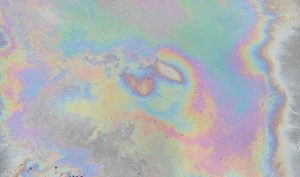Handling a diesel spill quickly and efficiently is crucial for safety and environmental protection. Diesel spills can happen anywhere, from construction sites to industrial facilities, and they pose serious risks. Immediate action is needed to prevent the spread of the fuel, which can cause harm to both people and the environment.
The first few moments after a diesel spill are critical. You must assess the situation to understand the extent of the spill and identify any potential hazards. Knowing what steps to take can make a significant difference in minimising damage and ensuring a swift response.
Containing and cleaning up the spill promptly helps prevent long-term environmental impacts. It’s essential to follow best practices for diesel spill removal and to comply with environmental regulations. Soil testing and ensuring adherence to EPA guidelines are part of the process. By understanding these actions, you can be better prepared to handle diesel spills effectively and protect your surroundings.
Assessing the Situation: Immediate Steps After a Diesel Spill
When a diesel spill occurs, the first step is to assess the situation quickly. Start by ensuring the safety of everyone around. Make sure that no one is exposed to the spill or its fumes. Evacuate the area if necessary and wear protective clothing to avoid skin contact.
Next, identify the source of the spill. Determine if the spill is coming from a vehicle, a storage tank, or another source. Once you understand the source, take action to stop any further leakage if it’s safe to do so. This could involve shutting off valves or using absorbent materials to create a temporary barrier.
It’s important to document the spill. Take notes on the volume of diesel spilled, the area affected, and any immediate actions taken. Photos can be helpful for later reporting. Contact emergency services if the spill is large or if you are unable to control it. Quick and detailed assessment helps in planning the next steps effectively.
Containing the Spill: How to Minimise Environmental Impact
After assessing the situation, the next critical step is to contain the spill to limit environmental damage. Use absorbent materials like spill kits, sand, or soil to block the spread of diesel. These materials act as barriers, preventing the fuel from reaching drains, waterways, or permeable ground.
Deploying booms around the spill area can also be effective, especially in larger spills or those near water sources. Booms help keep the spill contained to a limited area, making the cleanup process easier and more efficient. Ensure the barriers remain in place and check them regularly for any signs of diesel seepage.
Quick containment reduces the risk of long-term environmental harm. Inform local environmental authorities about the spill. They may provide additional resources and guidance on containment efforts. Keeping the spill controlled helps protect wildlife, plant life, and water sources from contamination. Proper containment is a key step in the overall response to a diesel spill.
Cleaning Up: Best Practices for Diesel Spill Removal
Once the diesel spill is contained, the next step is proper cleanup. Quick action is needed to prevent further environmental damage. Start by using absorbent materials such as pads, booms, and soil to soak up the diesel. Avoid using water, as it can spread the diesel and make the cleanup process more difficult.
Bag and dispose of used absorbent materials according to local regulations. This ensures that the contaminated materials are handled safely and responsibly. Use specialised tools like vacuum excavation units to remove any remaining diesel from the surface and soil. These tools are effective in extracting diesel without causing additional harm.
After removing the bulk of the diesel, clean the affected area with eco-friendly detergents. These detergents help break down any remaining diesel residues. Rinse the area with water carefully, ensuring there is no chance of diesel entering nearby water sources. Proper cleanup not only restores the area but also minimises long-term environmental impacts.
Ensuring Compliance: Importance of Soil Testing and EPA Guidelines
Following a diesel spill, it’s crucial to ensure compliance with environmental regulations. Soil testing is a vital step in this process. Conduct soil sampling in the affected area to check for diesel contamination levels. Testing can provide evidence that the cleanup was thorough and meets regulatory standards.
Contact an environmental professional to conduct the soil tests. They will collect samples and analyse them in a lab to determine contamination levels. Based on the results, they can advise on any further steps needed to achieve compliance.
Adhering to EPA guidelines is essential. These guidelines provide a framework for spill response and cleanup, ensuring that the environment and public health are protected. Keep detailed records of the spill, containment, and cleanup efforts. These records can prove invaluable during inspections or regulatory audits. Ensuring compliance not only protects the environment but also helps avoid legal consequences.
Conclusion
Responding to a diesel spill requires quick and effective action. Each step plays a crucial role in minimising environmental damage, from assessing the situation and containing the spill to cleaning up and ensuring compliance. Proper assessment helps understand the extent of the spill and prioritise immediate actions. Containing the spill promptly limits its spread, making the cleanup process more manageable.
Cleaning up the spill using best practices ensures that diesel residues are thoroughly removed and disposed of safely. Soil testing and adherence to EPA guidelines are essential for verifying that the area is free of contamination and that all regulatory requirements are met. Detailed records and evidence of compliance help maintain transparency and avoid potential fines or legal issues.
For expert help in dealing with diesel spills and ensuring compliance, trust iVAC WA. Our team provides professional and efficient spill response services, including soil sampling and testing. Contact us today to keep your property safe and environmentally compliant.

